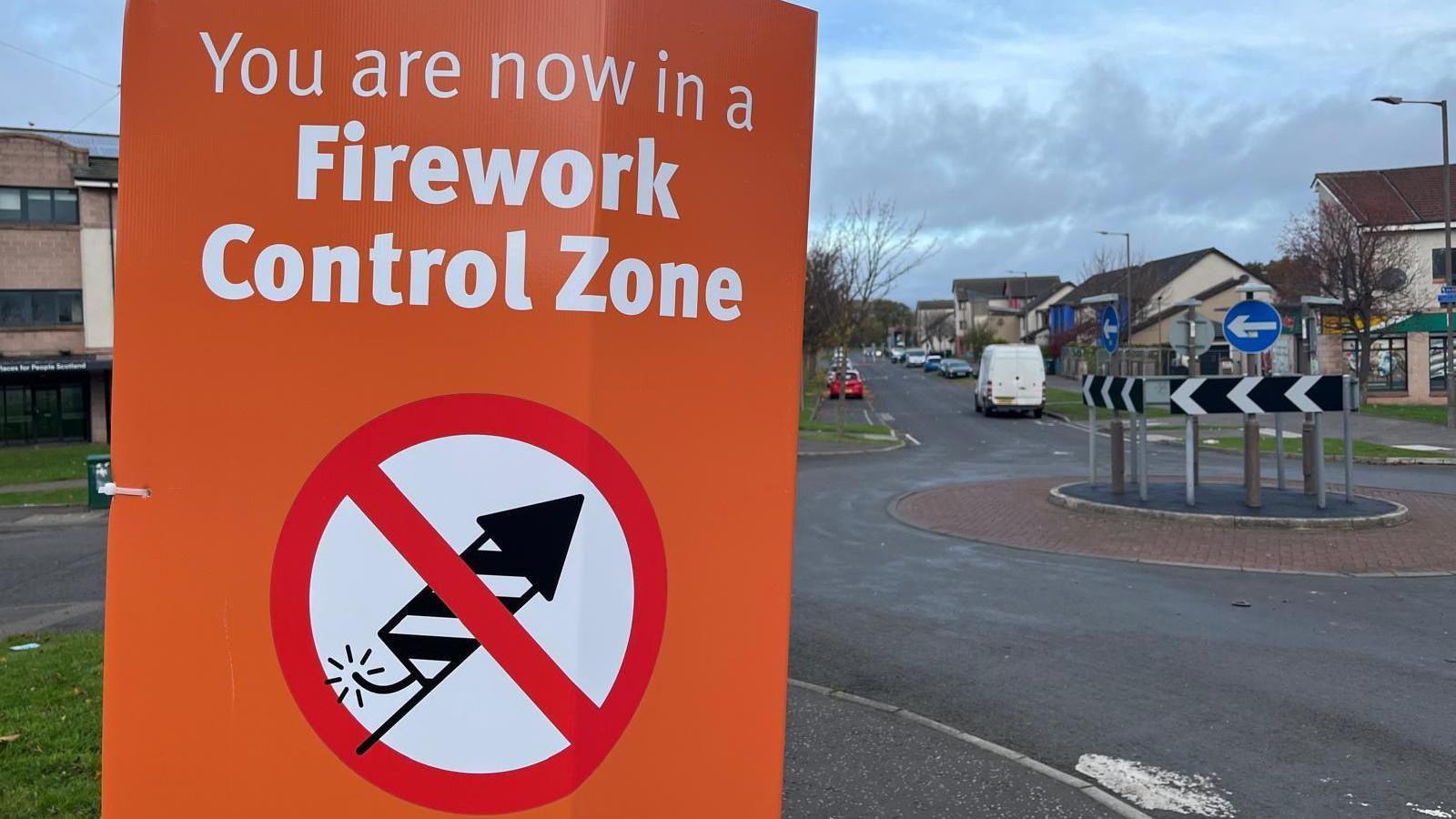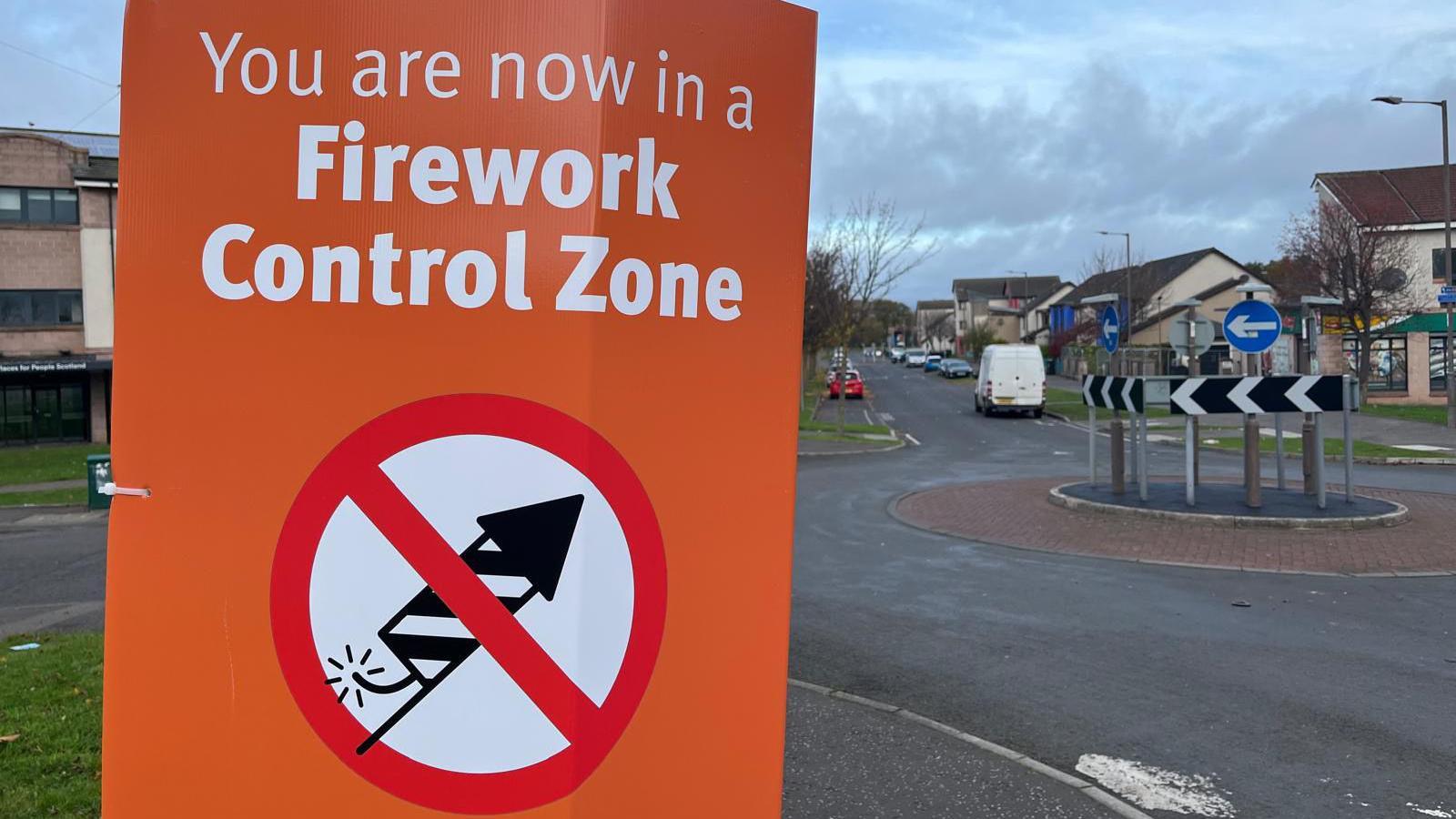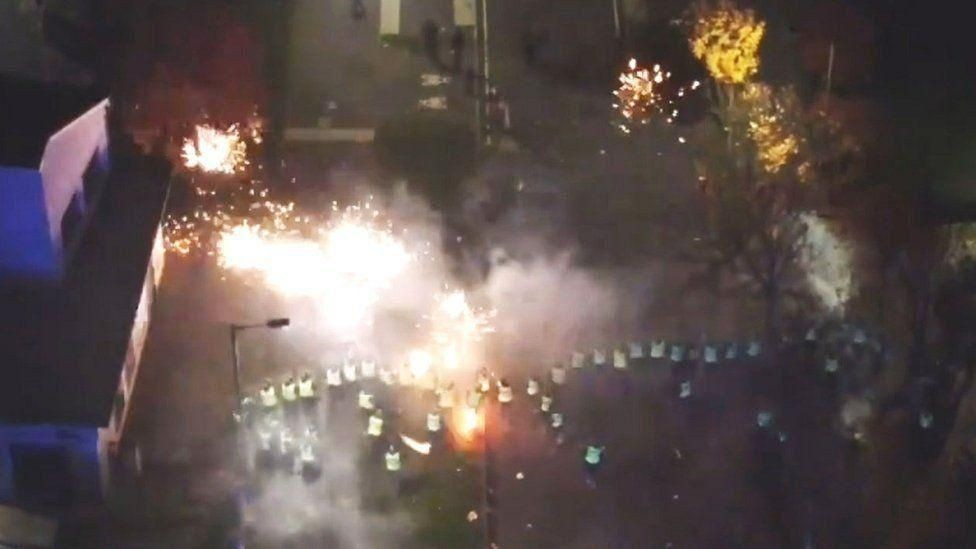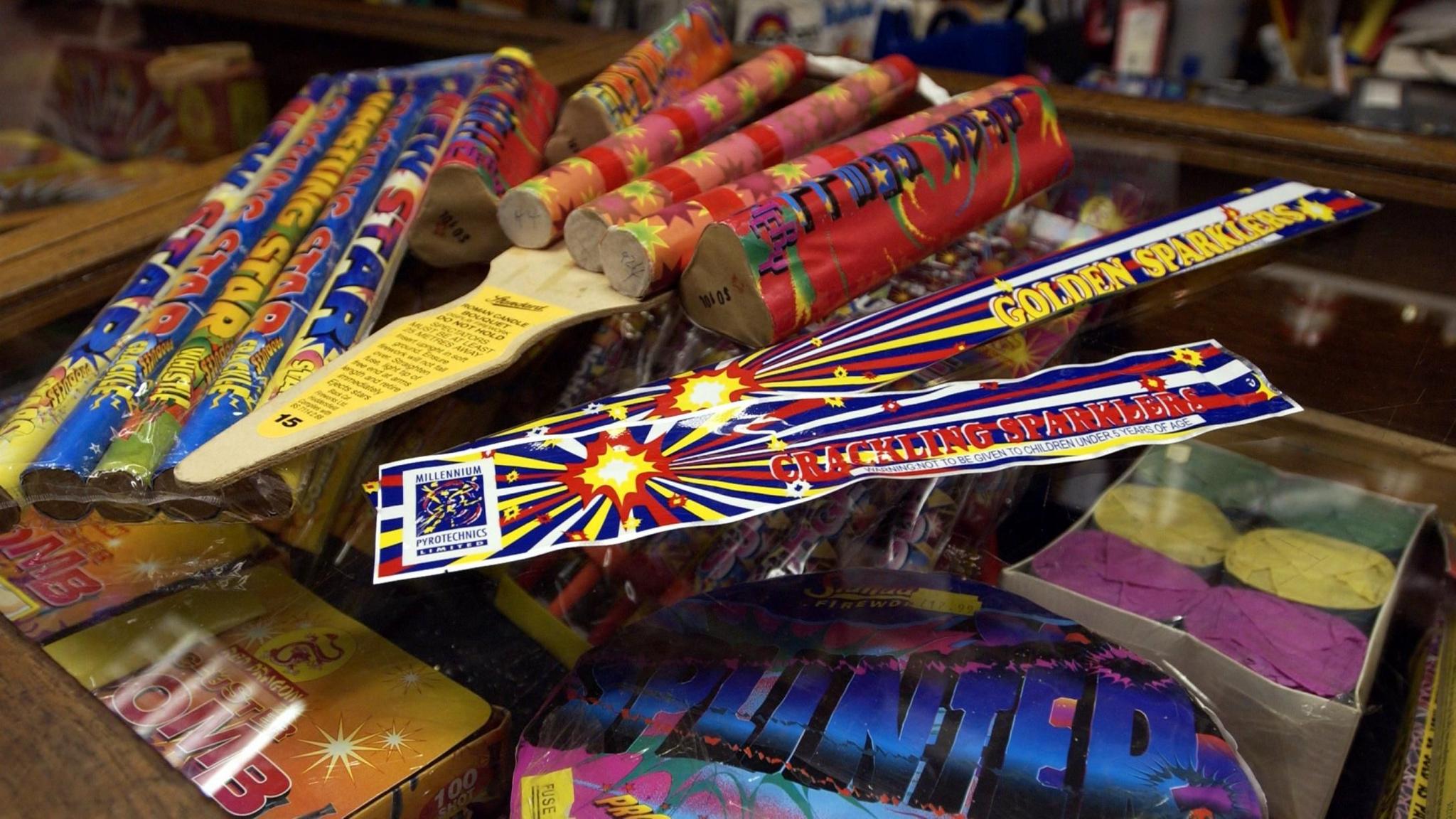Glasgow firework ban zones come into force for first time

A Firework Control Zone sign located in the Pollokshields area of Glasgow
- Published
Restrictions banning fireworks in some parts of Glasgow have come into force for the first time after being delayed last year due to a missed deadline.
A firework control zone (FCZ) was meant to be in place in the Pollokshields area last November but it did not go ahead as Glasgow City Council failed to issue the legal notice needed to create it in enough time.
This year FCZs are in place in three areas of the city - Pollokshields, Govanhill and Broomhouse - in a bid to curb disorder over the Bonfire Night period.
Within the zones it is a criminal offence for a member of the public to set off a firework from 1 November to 10 November.
This includes private spaces such as back gardens and in public areas, although sparklers are allowed.
It is hoped the move will boost safety, cut disturbances and shield vulnerable residents and animals from loud noises, after years of debate surrounding the negative impact of fireworks.

Firework control zones were first introduced in Edinburgh last year
On Friday FCZs came into force in nine areas of Edinburgh until 9 November.
Police Scotland will enforce the restrictions and anyone found breaching them could face up to six months in prison and a fine of up to £5,000.
Pollokshields has seen disorder on Bonfire Night in recent years, with locals describing how groups of hooded young men roamed the streets firing large fireworks at buildings, cars and people.
Glasgow City Council said the introduction of the three FCZs received "strong support" from local residents during a public consultation.
A spokesman said: "We carefully considered all applications for a control zone along with our partners in the police and fire services and looked closely at incident data from previous years.
"People have every right to be fed up with the misuse of fireworks experienced around Bonfire Night.
"We hope the new control zones give the police another tool to tackle firework-related disorder in the most affected communities in Glasgow."
Watch: Drone video shows fireworks being fired at police
Local authorities were given powers to introduce FCZs in 2022 following a major riot in Dundee.
City of Edinburgh Council was the first to vote in favour of the zones in August last year.
The FCZs in the capital cover Balerno, Calton Hill, Corstorphine, Gracemount, Longstone, Moredun, Niddrie, Seafield and Sighthill.
Last year emergency services dealt with significant disorder which saw police and firefighters targeted with fireworks, bricks and bottles on 5 November.
Parts of Edinburgh and Glasgow were among the worst affected areas.
Police Scotland last week launched Operation Moonbeam, its annual public order response to violence and disorder around Bonfire Night.
The force said more than 60 people were reported for their alleged involvement in fireworks offences last year.
This year, it is dedicating more resources than ever to tackling crimes involving fireworks.
Many officers, including those in the Tayside and Edinburgh areas, will be equipped with body-worn video cameras.
Local authorities were given the option to ban the use of fireworks after MSPs passed the Fireworks and Pyrotechnic Articles Act, external in 2022.
Related topics
- Published31 October

- Published30 October

- Published12 August
